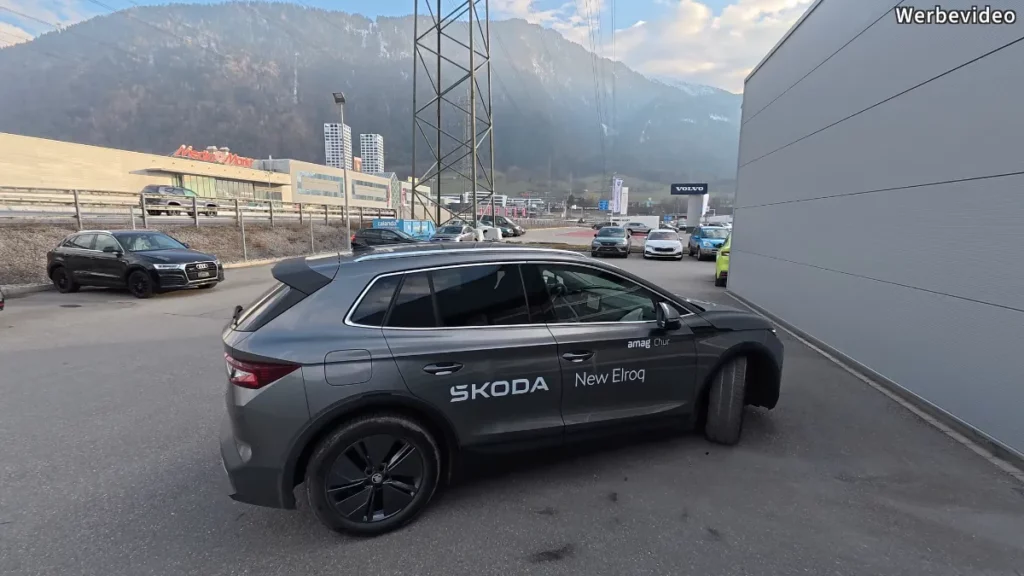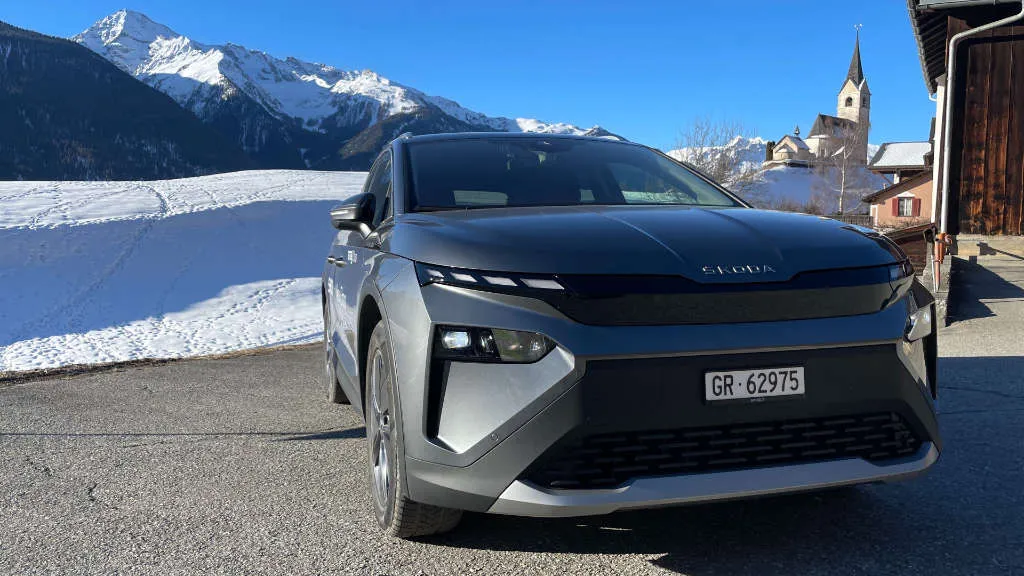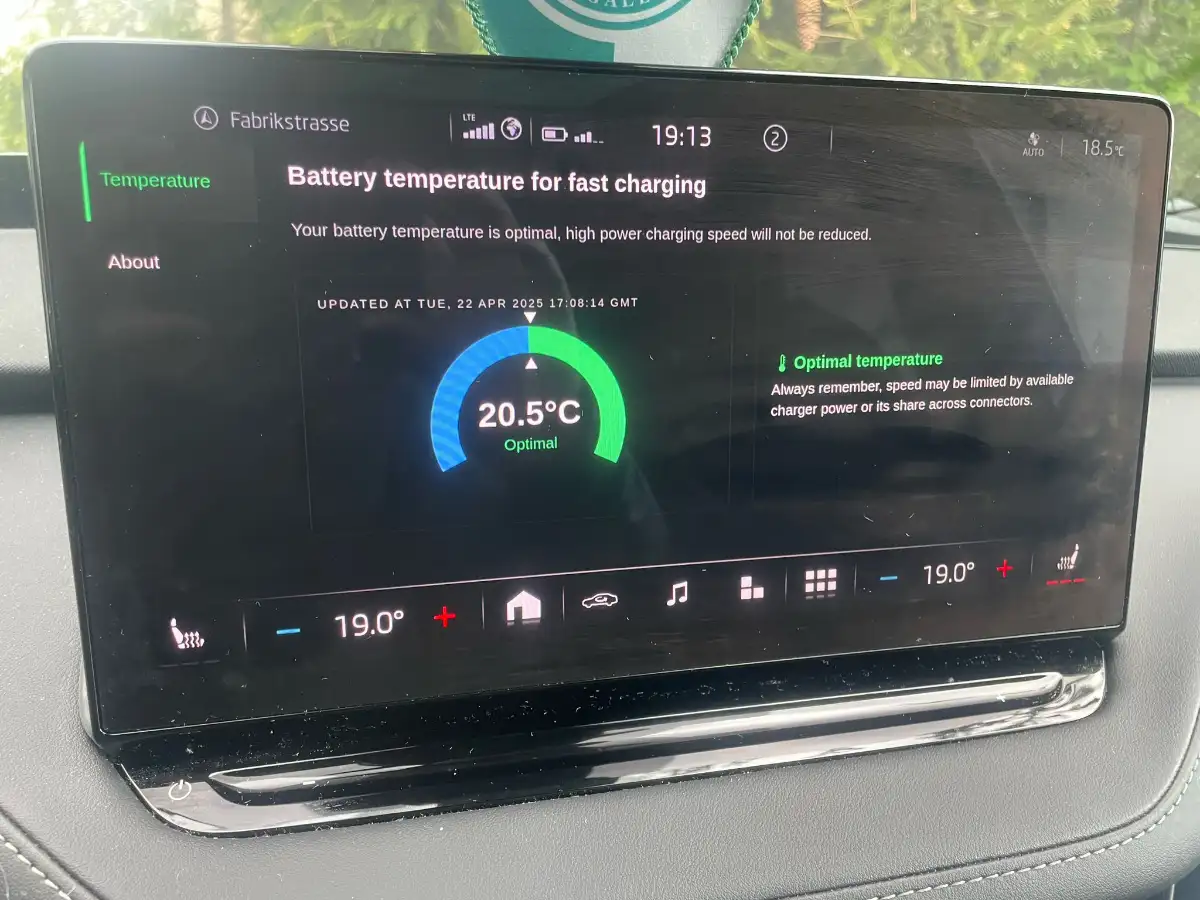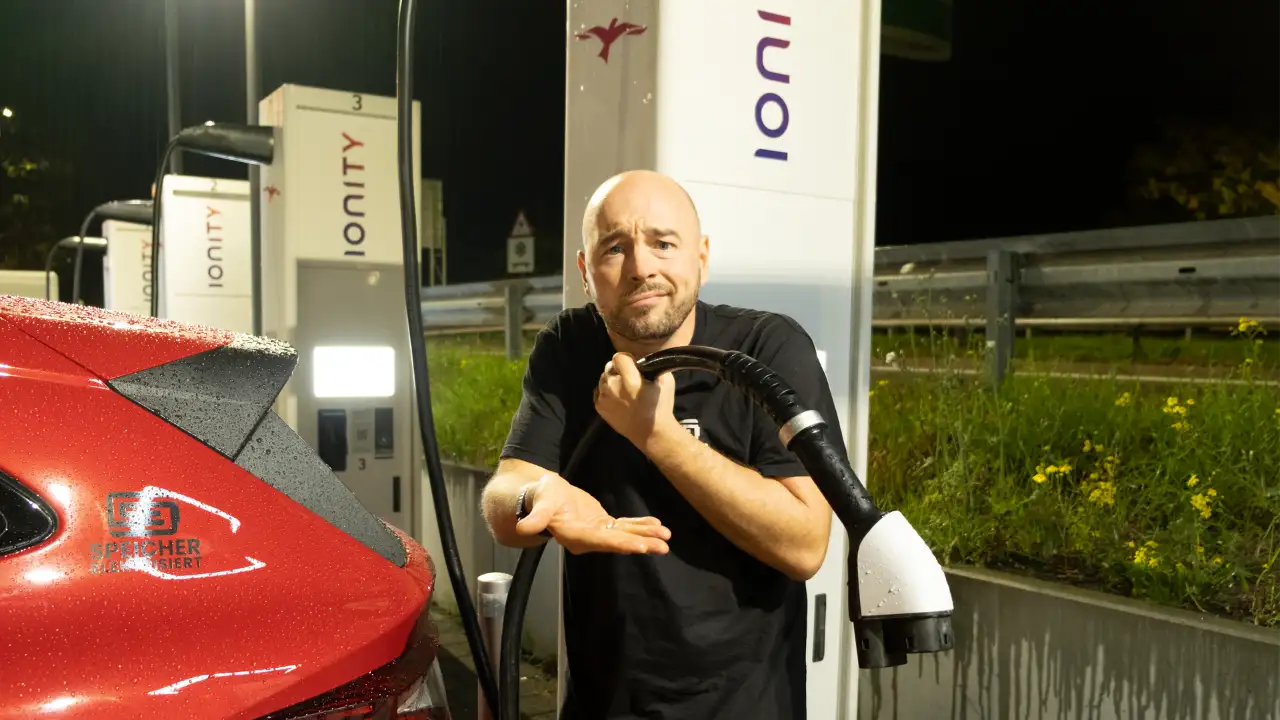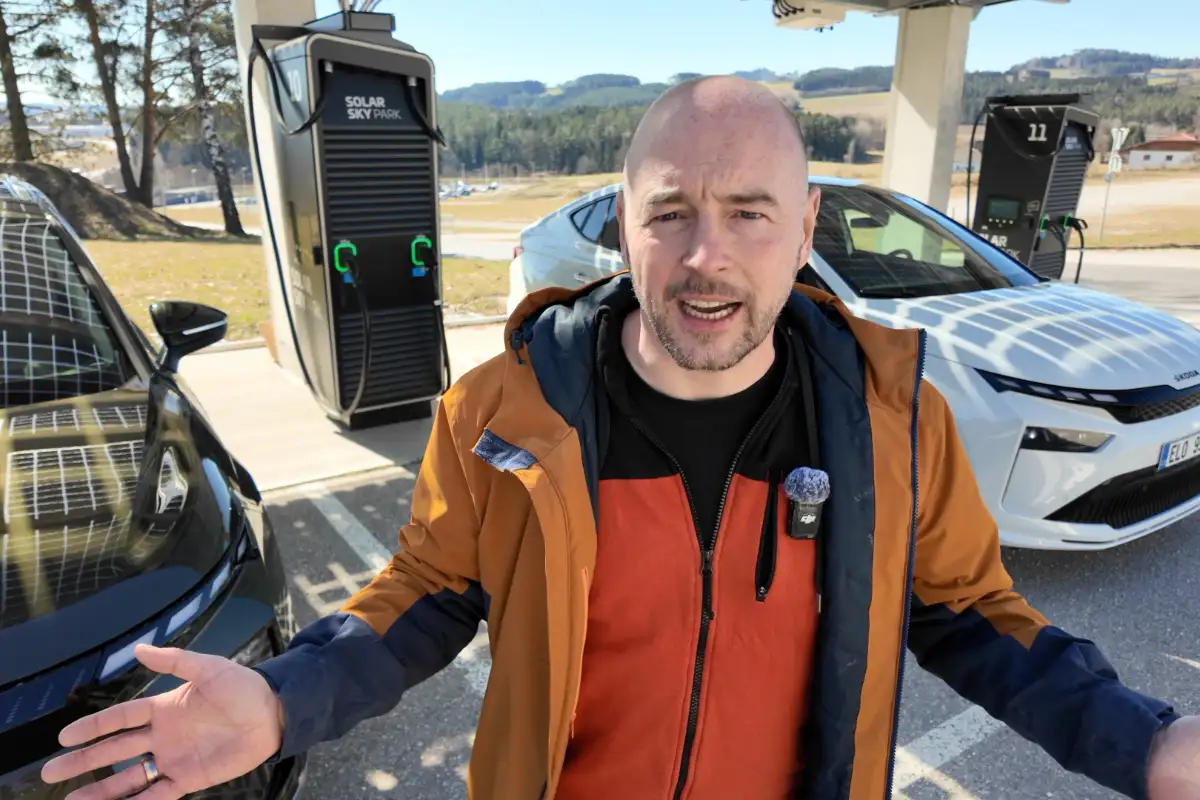You probably know my standard test route by now: from Mels to Davos and back – 158 km with 1,000 meters of elevation gain, including motorway, rural roads, and mountain passes.
This time, I took the brand-new Škoda ELROQ 85 through the same challenge in full winter conditions: snow, cold, and temperatures down to –8 °C.
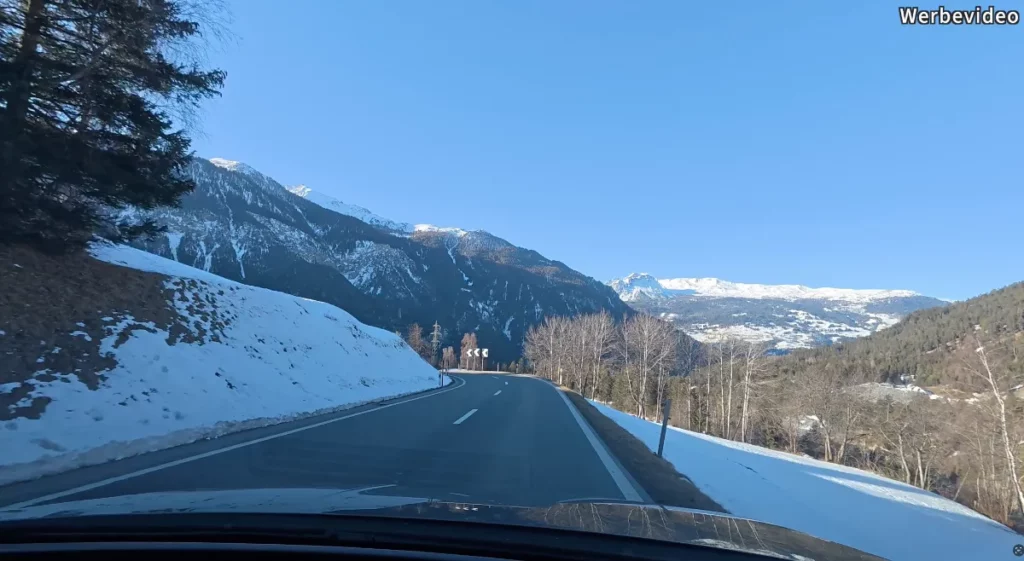
Key Data at a Glance
Tyres: Factory-installed winter tyres
Energy consumption: 19.4 kWh/100 km – a very good result for an SUV
Recuperation: 5.1 kWh recovered (14.5% of total energy used)
Temperatures: Battery between 6–10 °C, ambient as low as –8 °C
Driving mode: Mostly B-mode with active assistance systems
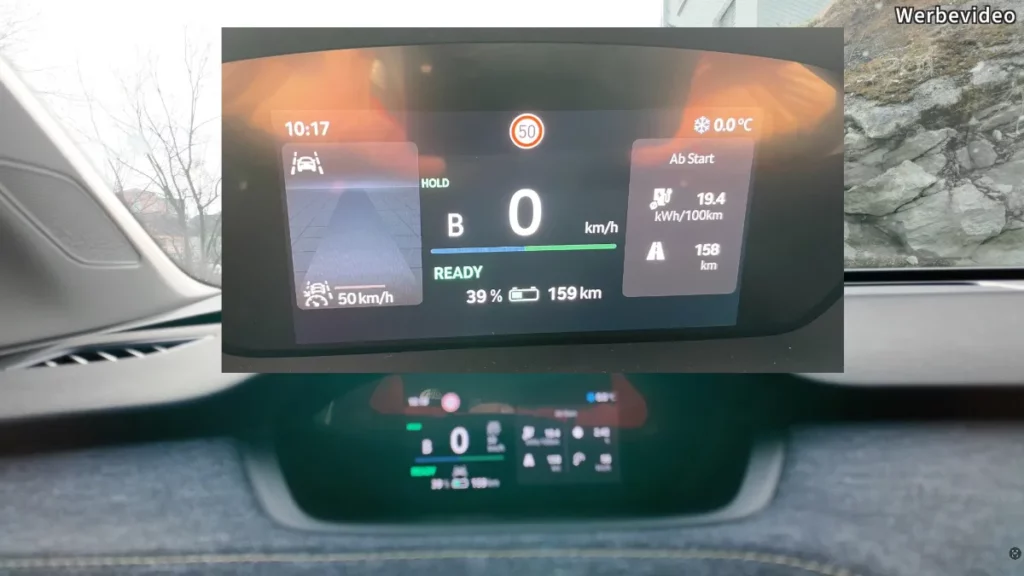
What Surprised Me?
Range estimate: Extremely accurate – the car finished with exactly the predicted 39% SoC
Turning circle: The rear-wheel drive makes the car feel very agile – great for urban areas and mountain hairpins
Steering wheel hand detection: Much less annoying than in the ENYAQ – no constant warnings
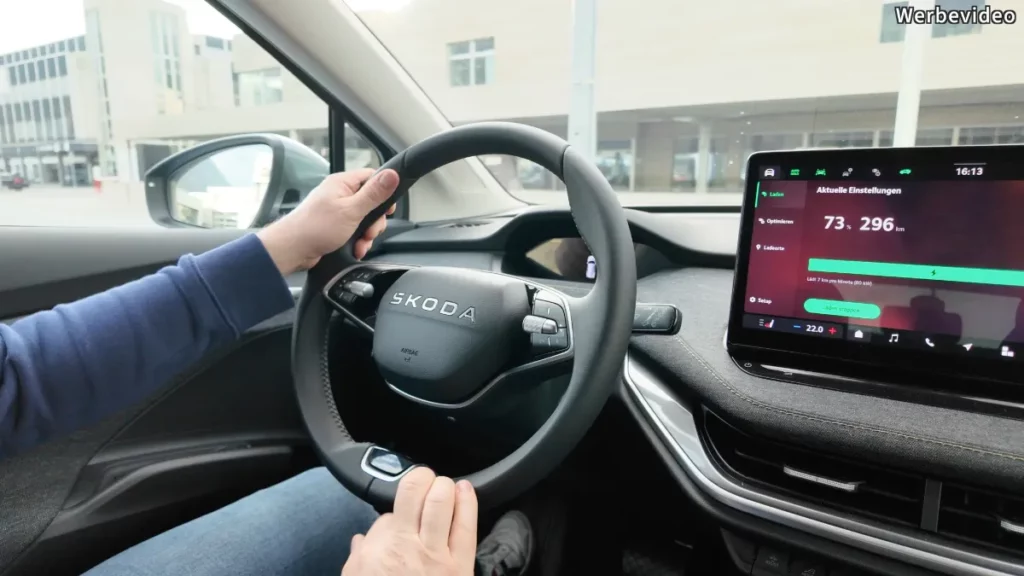
Comparison with the ENYAQ
I’ve done the exact same route with the ENYAQ 80x:
Consumption was 21.3 kWh/100 km – though under even colder conditions (down to –20 °C).
Still, the ELROQ proves to be slightly more efficient, which makes sense given the similar technology but lower weight
